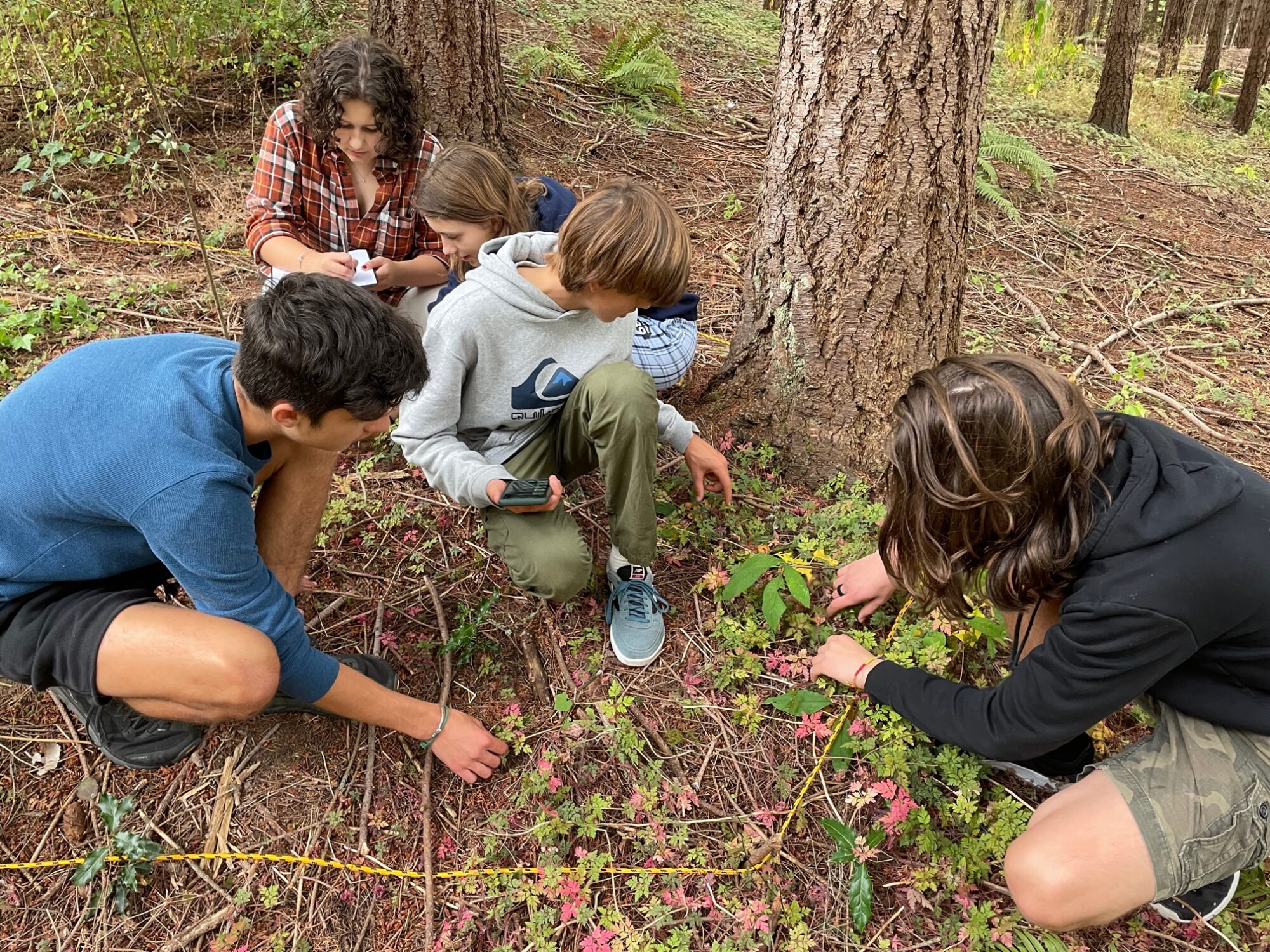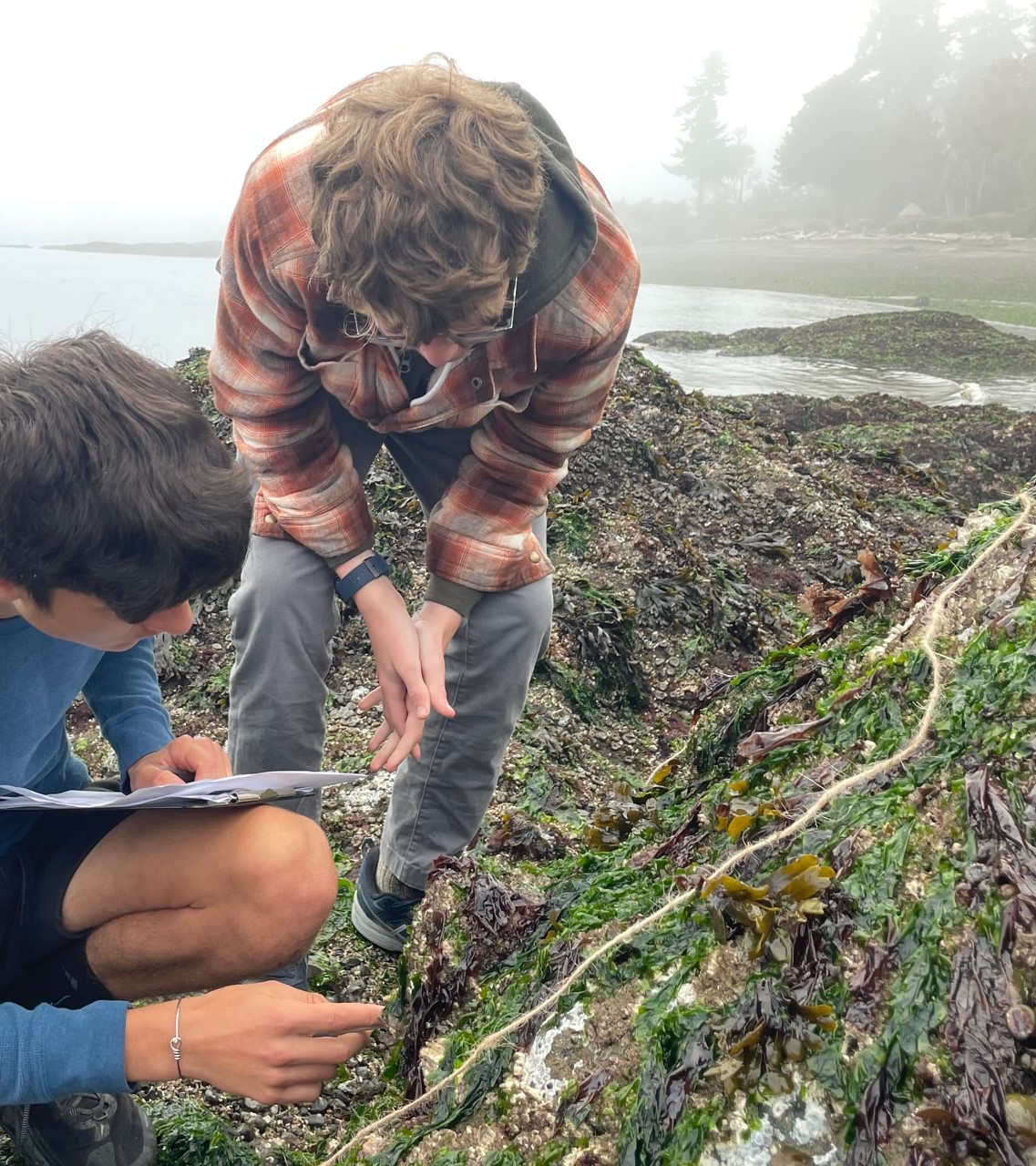Hyla Stories
Biological communities: diversity, health & restoration

9th Grade Biology
By Erik Saksa, teacher

Biological Communities
After starting the year with the framework of food chains/webs to understand the structure of biological communities, our Biology students zoomed in to investigate the interspecific interactions between individual species that comprise those communities. Students explored exploitative relationships (predation, herbivory, and parasitism) and positive interactions (mutualism and commensalism) with endless examples found in nature. Our first unit ended with case studies examining the role Ecosystem Engineers (beavers) and Keystone Species (sea otters) play in maintaining balance in their respective ecosystems.
Hands-on Labs
Through a series of hands-on laboratories, students then investigated different measures of community diversity, including species richness, relative abundance and Simpson’s Diversity Index (a mathematically calculated value combining the former two measures). During a walking field trip to Moritani Preserve, we practiced collecting plant species data (with the help of Seek, a naturalist identification app) to compare the diversity of different sections of the forest floor based on its level of restorative thinning. With a gained understanding of the biotic and abiotic factors affecting diversity in terrestrial environments, students then turned their newly honed skills to the rocky nearshore environment of Rockaway Beach. With clipboards and identification guides in hand, we dispersed onto the intertidal zone, in search of some quadrants that contained Purple Sea Stars, a Keystone Species of the Puget Sound ecosystem. While no plots with the organism were found, students collected species data nonetheless and by comparing their data to last years’ (that did contain the Keystone Species), they could quantitatively describe the effect of Purple Sea Stars on community diversity.
Case Studies
Moving forward with enhanced resolution of the biological communities, students will embark on investigations contrasting the two hypothesized models of their organization, the top-down model and the bottom-up model. The top-down model postulates a unidirectional influence of top predators DOWN the food chain, while the bottom-up model, the unidirectional influence of nutrient availability and/or primary producers UP the food chain. Small groups will then read published scientific studies about community organization within specific ecosystems, and will be asked “How did scientists design a study to determine the correct model of community organization?” Equipped with an understanding of the study design, our Biology students can then answer, “Do the results support a top-down or bottom-up model?” Case studies will include:
- Prairie Dogs in the Wind Cave National Park
- Predators of Periwinkle Snails in Salt Marshes of Georgia, and
- Planktonic Communities in the warm temperate wetland of Argentina.
Ecosystem Restoration
Using their applied and comprehensive knowledge of community organization, Biology students will finish the semester studying the approaches ecologists employ to restore degraded ecosystems to their natural start. As they familiarize themselves with these approaches, I’m excited in the coming months, to watch them learn of their current application in our immediate natural environment!
